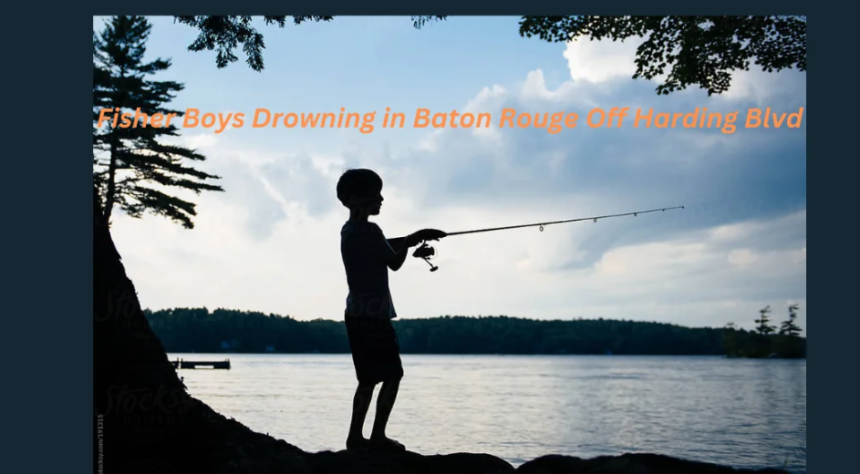Tragedies remind us of the importance of safety near water, especially when young lives are involved. The unfortunate incident of the fisher boys drowning in Baton Rouge off Harding Blvd has brought awareness to this critical issue. This article sheds light on the circumstances surrounding such incidents, the need for water safety, and measures to prevent future tragedies.
Overview of the Incident
In Baton Rouge, along the Harding Blvd area, a group of young boys was fishing. However, their day by the water turned tragic when several of them reportedly drowned. Such incidents are unfortunately common near open water bodies, especially when proper safety precautions are overlooked. Let’s delve into why such incidents happen and what can be done to prevent them.
Understanding Water Safety
Water safety is essential, especially for children and teenagers who may not fully understand the risks associated with open water. Some key safety concerns include:
- Unpredictable Depths: Water depths can vary, increasing the risk for those who may not be strong swimmers.
- Lack of Swimming Skills: Many children and teenagers are not proficient swimmers, increasing their risk in deep waters.
- Underwater Hazards: Hidden objects, strong currents, and slippery surfaces can create additional dangers.
Why Children Are at Risk?
Children and teens are naturally curious and adventurous. When fishing or swimming, they may feel confident near the water but may not fully understand the risks. Without adult supervision, they are particularly vulnerable.
Safety Measures for Fishing and Swimming
To prevent tragedies like the fisher boys drowning in Baton Rouge off Harding Blvd, it’s essential to follow safety protocols around water bodies.
Adult Supervision
Having a responsible adult nearby is one of the most effective safety measures. Adult supervision can help manage risks, watch for signs of distress, and act quickly in emergencies.
Using Safety Gear
Life jackets, flotation devices, and safety ropes can provide essential support. When fishing or engaging in activities near deep water, wearing safety gear can make a significant difference.
Swimming Skills
Encouraging children to take swimming lessons can save lives. Proficiency in swimming allows individuals to feel more secure in the water and better handle unexpected situations.
The Importance of Community Awareness
Raising awareness within communities about water safety can prevent future incidents. Here are a few strategies:
- Community Programs: Local authorities can run programs to educate families on water safety, particularly in high-risk areas.
- School Education: Schools can introduce water safety education in their curriculum, teaching children basic safety measures.
- Local Signs and Warnings: Installing visible signs near water bodies can alert people to potential dangers, such as strong currents or steep drop-offs.
Organizations Promoting Water Safety
Several organizations are dedicated to water safety awareness. They offer resources, training programs, and safety guidelines. By working with these organizations, communities can increase awareness and reduce drowning incidents.
Factors Contributing to Drowning Incidents
Understanding the factors that contribute to drowning is essential for prevention. Here are some common factors:
- Lack of Supervision: Most drownings happen when there’s no adult supervision.
- Poor Visibility: Murky waters can hide hazards, making it difficult for anyone in distress to be easily seen.
- Limited Access to Safety Gear: Not all families have access to life jackets or flotation devices, increasing risks near open water.
- Distractions: Adults near water bodies should avoid distractions to ensure that they are fully attentive.
Environmental Factors
Environmental conditions play a significant role in water safety. Unstable weather, strong winds, and sudden temperature changes can create dangerous water conditions, even in typically calm areas.
Raising Awareness and Prevention
Raising awareness is crucial. The tragic event of the fisher boys drowning in Baton Rouge off Harding Blvd serves as a reminder to take preventive measures seriously.
Local Community Initiatives
Communities around Baton Rouge and other high-risk areas can take proactive measures. Local parks and recreation departments can:
- Host water safety workshops for families.
- Partner with local schools to provide water safety education.
- Offer discounts on life jackets or flotation devices.
Role of Parents and Guardians
Parents and guardians play a vital role in water safety. By educating children about water risks, ensuring they know how to swim, and always supervising them, parents can greatly reduce the risk of drowning.
Key Takeaways
Preventing drowning requires community effort, awareness, and consistent safety practices. The tragic story of the fisher boys drowning in Baton Rouge off Harding Blvd illustrates the need for continuous vigilance near water.
Conclusion
The incident of the fisher boys drowning in Baton Rouge off Harding Blvd is a heartbreaking reminder of the importance of water safety. Through community awareness, proper safety measures, and individual responsibility, we can work together to prevent such tragedies. Water safety should always be a priority, especially in areas with high water activity. By taking proactive steps, educating our communities, and ensuring proper supervision, we can create a safer environment for everyone.
FAQs
What led to the drowning incident in Baton Rouge?
A group of boys fishing off Harding Blvd encountered deep water, leading to the unfortunate drowning.
How can we prevent such incidents in the future?
By increasing community awareness, promoting water safety education, and ensuring supervision, we can reduce risks.
What safety measures are essential near water bodies?
Adult supervision, safety gear, swimming lessons, and local awareness programs are key safety measures.
Are there specific organizations promoting water safety?
Yes, various organizations provide resources and training to promote water safety in communities.
What role do parents play in water safety?
Parents can educate their children, ensure they learn to swim, and supervise them near water.
What can the local community do to improve water safety?
Communities can hold workshops, provide educational resources, and offer safety gear discounts to promote awareness.







